Angular Momentum - Definition, Examples, Quiz, FAQ, Trivia
Discover how spinning objects behave and why they're important in our world!
What is Angular Momentum?
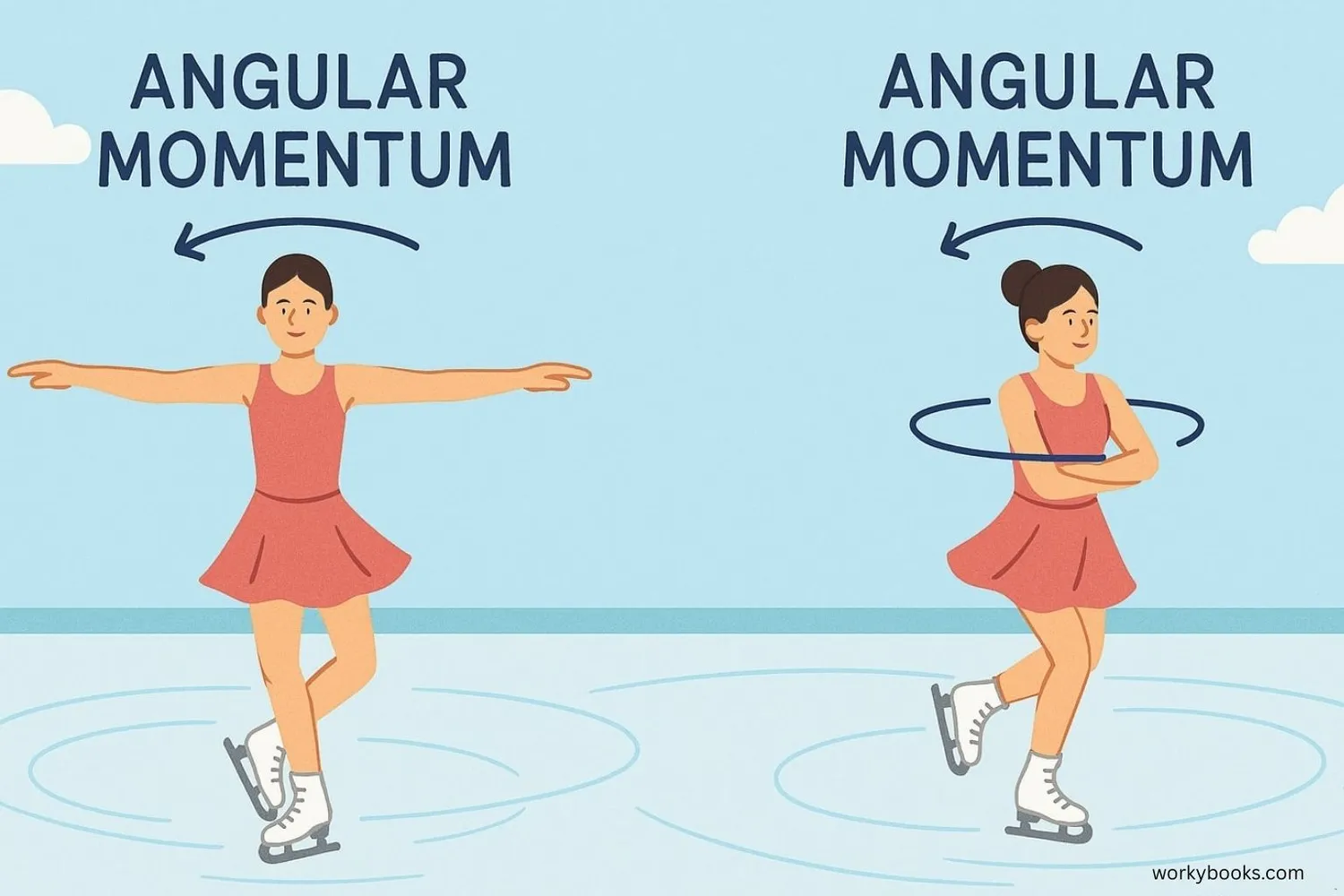
Angular momentum is a property that spinning objects have. It tells us how much spin an object has and how hard it is to stop that spin. Think of a spinning top - it keeps spinning until something stops it. That's because of angular momentum!
Just like regular momentum keeps moving objects going, angular momentum keeps spinning objects spinning. The more mass an object has and the faster it spins, the more angular momentum it has.
Science Fact!
Planets have angular momentum too! Earth's rotation gives us day and night, and its angular momentum keeps our planet spinning at a steady rate.
Angular Momentum Formula
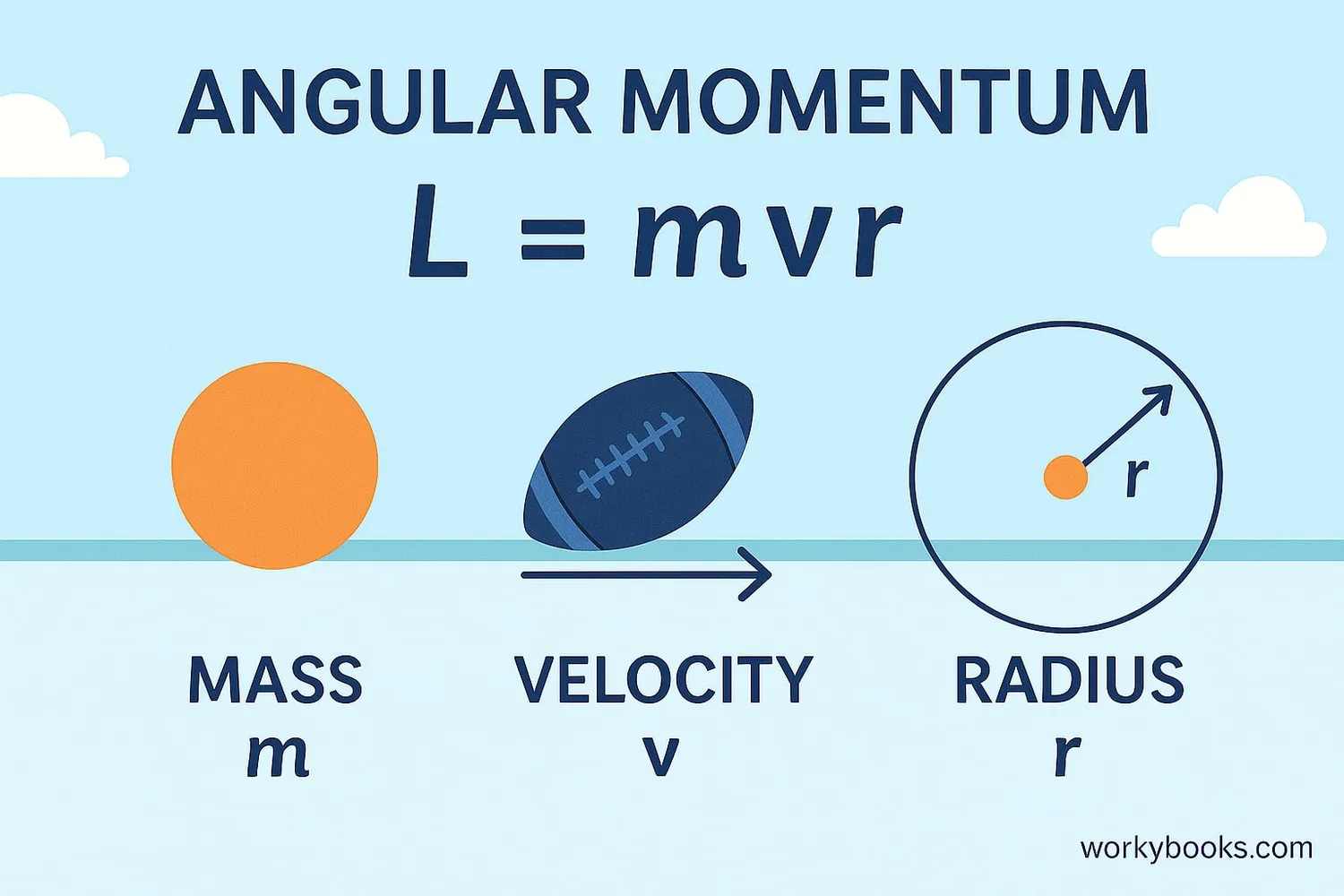
Scientists use a special formula to calculate angular momentum. The formula is:
Where:
• L is the angular momentum
• m is the mass of the object
• v is the velocity (how fast it's moving)
• r is the radius (distance from the center of rotation)
This means that angular momentum depends on how heavy something is, how fast it's moving, and how far it is from the center of rotation.
Mass (m)
Heavier objects have more angular momentum when spinning at the same speed
Velocity (v)
Faster spinning means more angular momentum
Radius (r)
Objects farther from the center have more angular momentum
Angular Momentum and Torque
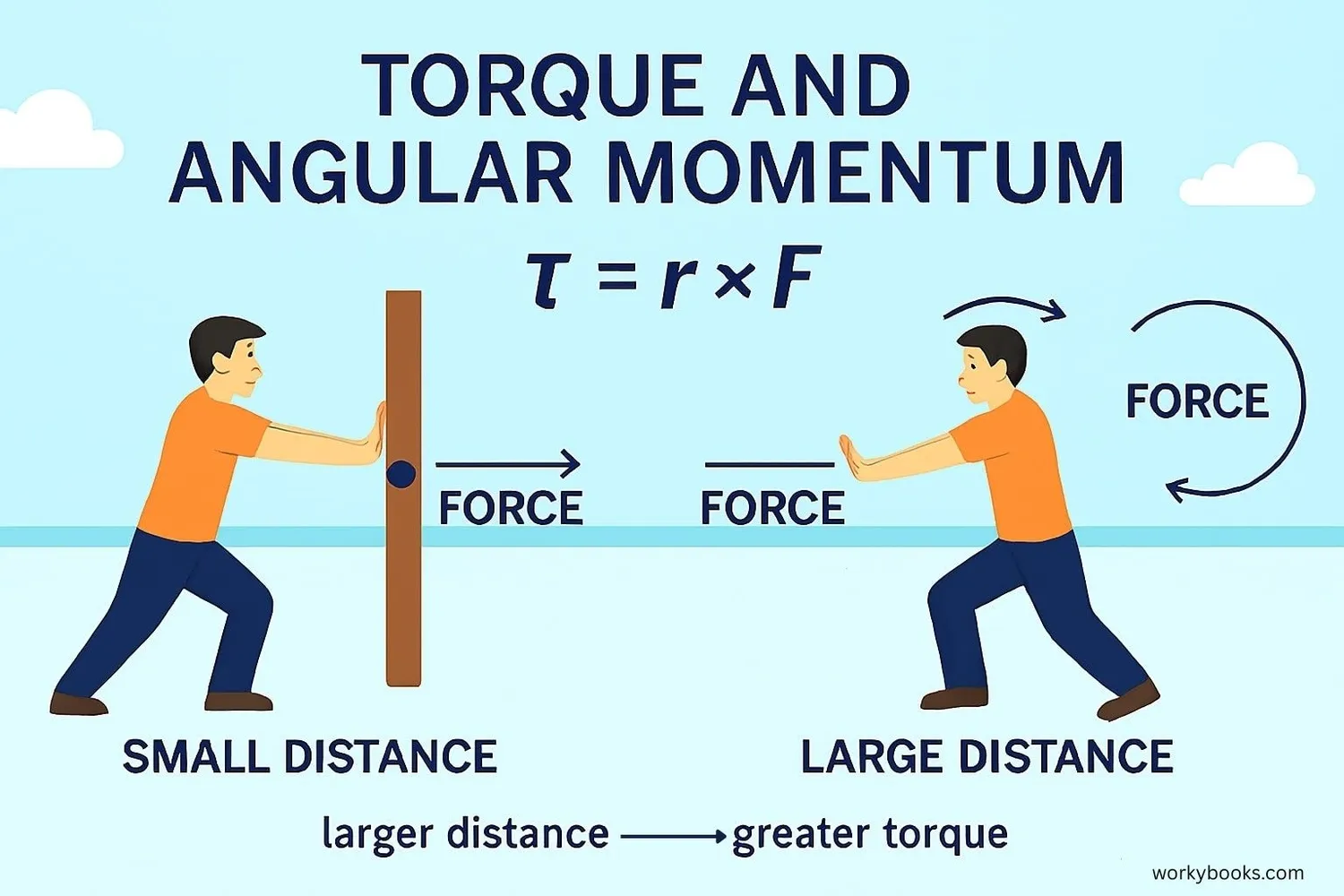
Torque is what changes angular momentum. Think of torque as a twisting force that makes objects start spinning, stop spinning, or spin faster or slower.
When you push a merry-go-round, you're applying torque. The harder you push, the more torque you apply, and the faster it spins (increasing its angular momentum). When friction slows it down, that's also torque - but in the opposite direction!
Real World Example!
When you open a door, you apply torque. Pushing near the handle (far from the hinges) requires less force than pushing near the hinges!
Conservation of Angular Momentum
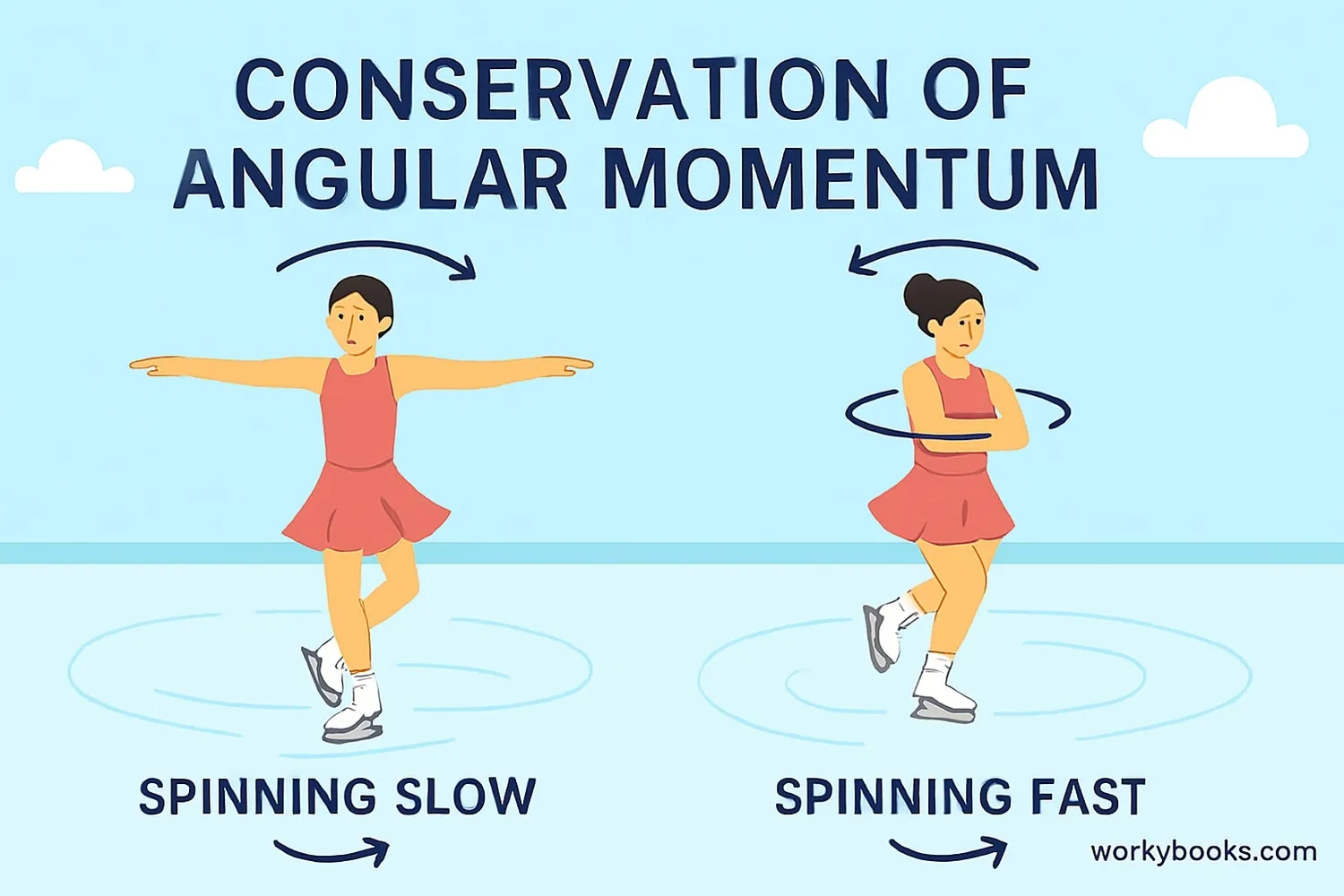
One of the most important ideas about angular momentum is that it is conserved. This means that unless something pushes or pulls on a spinning object (torque), its angular momentum stays the same.
This leads to some interesting effects. When a spinning object changes shape, its speed of rotation changes to keep the angular momentum constant. This is why figure skaters spin faster when they pull their arms in!
Arms Out
Larger radius = slower rotation
Arms In
Smaller radius = faster rotation
Same Momentum
Angular momentum is conserved
This conservation principle applies to everything from spinning tops to entire solar systems! Planets maintain their orbits because of conservation of angular momentum.
Examples of Angular Momentum
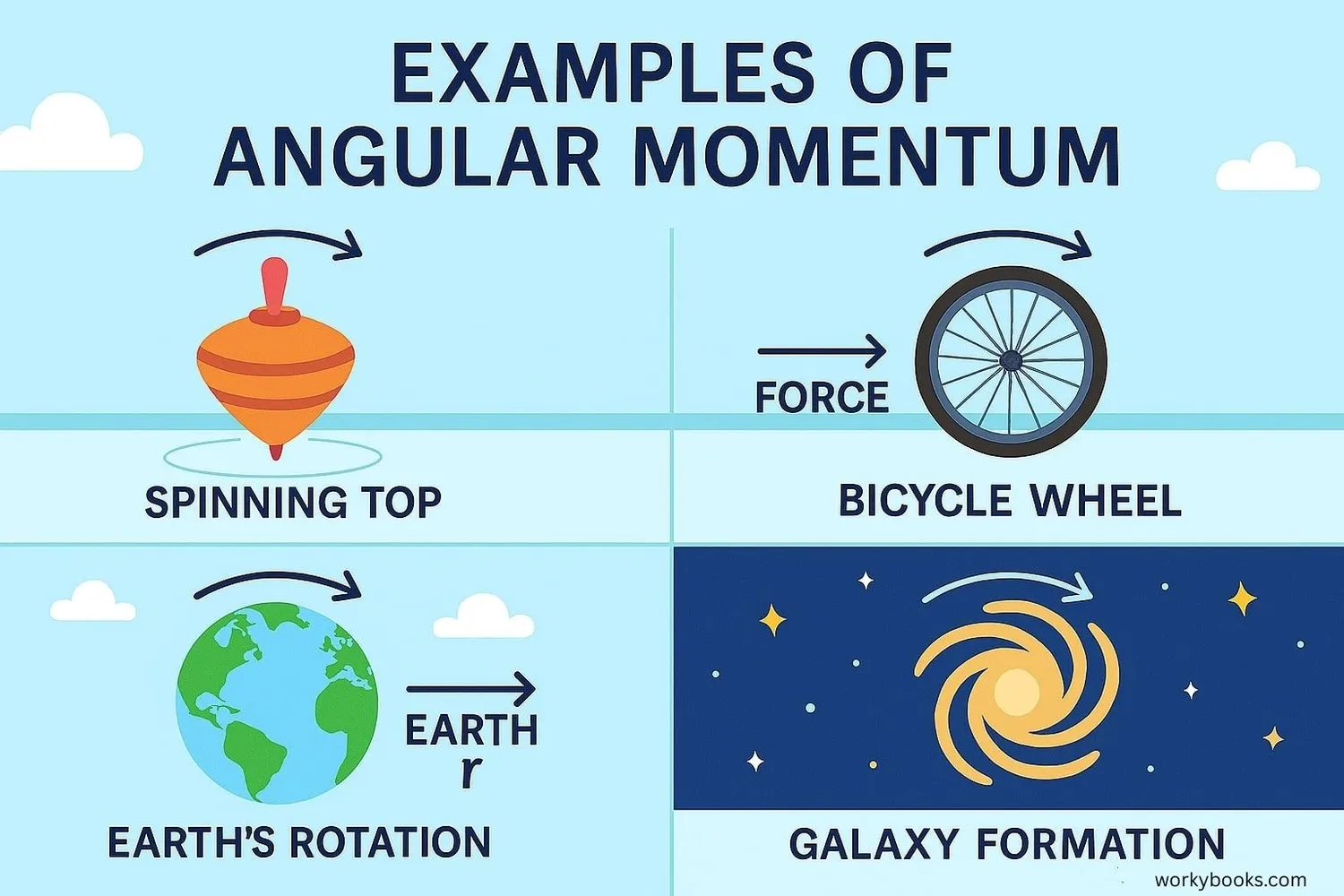
Angular momentum is all around us! Here are some common examples:
Spinning Tops
They keep spinning due to angular momentum until friction stops them
Bicycle Wheels
The spinning wheels help keep the bicycle stable
Earth's Rotation
Our planet spins due to angular momentum from its formation
Galaxies
Entire galaxies spin because of angular momentum
Even in sports, angular momentum is important! When divers or gymnasts tuck their bodies to spin faster, they're using the conservation of angular momentum.
Angular Momentum Quiz
Test your knowledge with this angular momentum quiz! Answer all 5 questions to see how much you've learned.
Frequently Asked Questions
Here are answers to some common questions about angular momentum:
Interesting Facts About Angular Momentum
Discover some amazing facts about angular momentum!
Earth's Spin
Earth's rotation is gradually slowing down due to tidal interactions with the Moon. About 400 million years ago, a day was only 22 hours long!
Cat Righting Reflex
Cats use angular momentum to always land on their feet. They twist their bodies in mid-air by changing their moment of inertia!
Olympic Divers
Olympic divers use the conservation of angular momentum to control their spins. They tuck tightly to spin faster and stretch out to slow down.
Neutron Stars
When massive stars collapse into neutron stars, they spin incredibly fast due to conservation of angular momentum. Some pulsars rotate hundreds of times per second!


